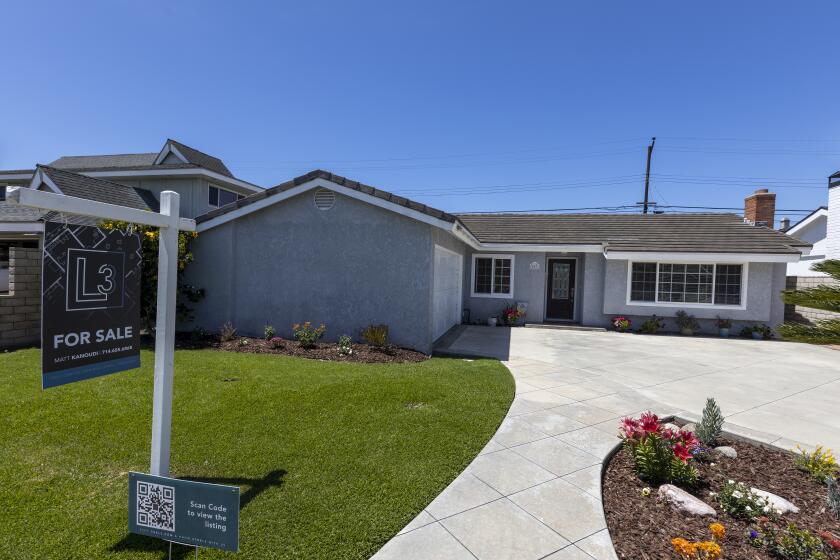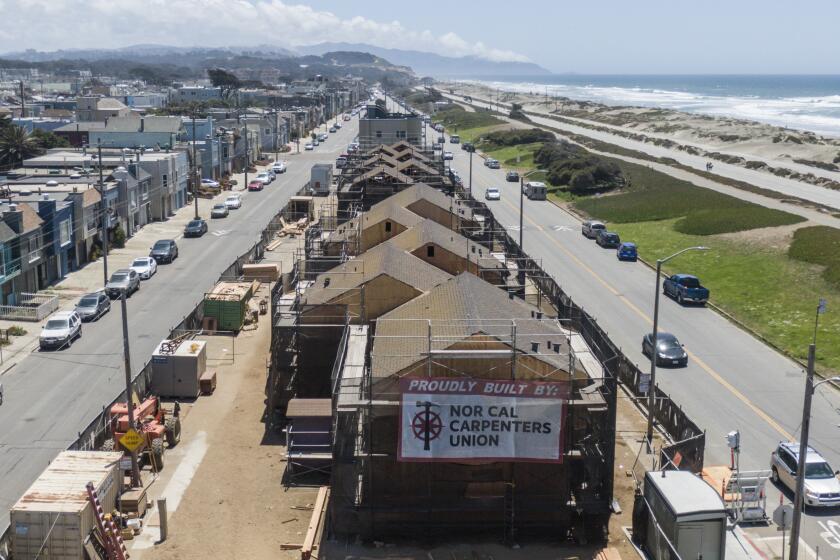A $50,000 electric bill? The cost of cooling L.A.’s biggest houses in a heat wave
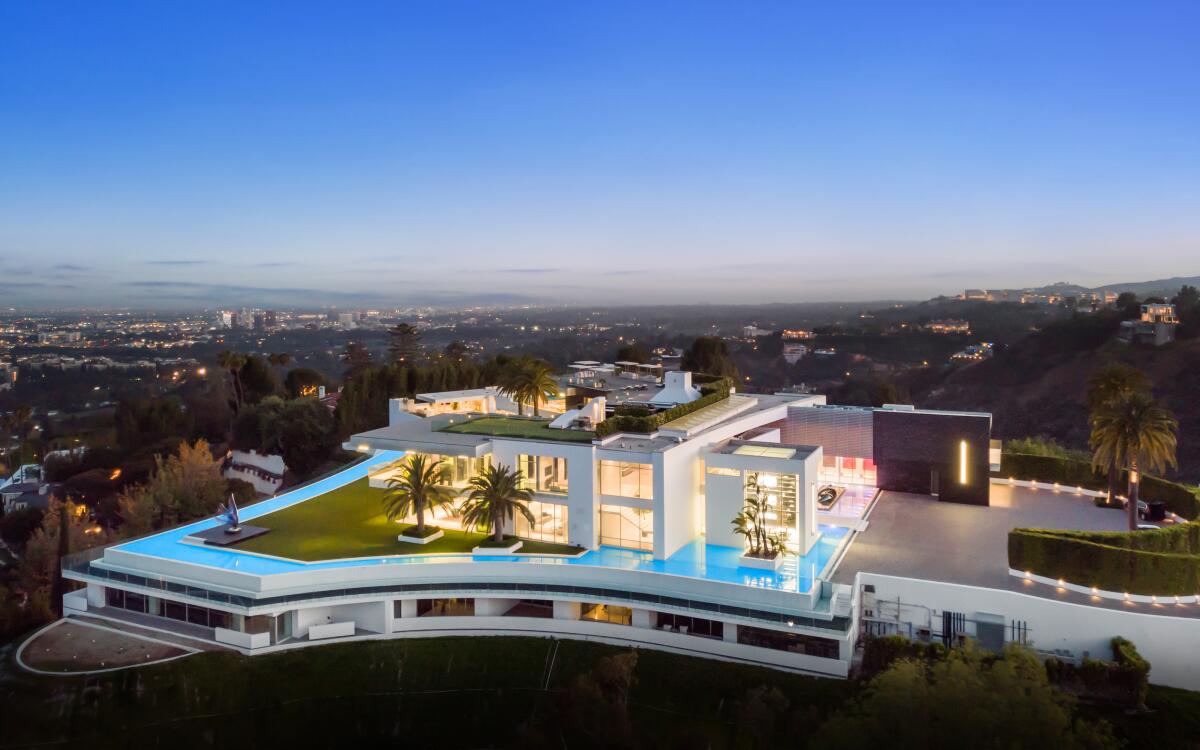
- Share via
Cooling off a 1,500-square-foot bungalow in a heat wave is expensive enough. But how big are the bills for the ever-larger mega-mansions crowning our hills?
Granted, those who can afford a $50-million home likely aren’t sweating a bloated electric bill, nor perhaps the carbon footprint, but experts say the cost of keeping a mansion cool can run well north of $10,000 per month.
Take “the One,” a 105,000-square-foot home in Bel-Air that set a record this year when it sold to the highest bidder for $141 million, the most ever paid for a home at auction in America. It’s the largest modern home in the country and looks more like a spaceship than an actual place to live.
Last year, a court-appointed receiver tasked with finding a buyer for the property told The Times that the monthly electric bill was $27,000. At the time, the air conditioning only worked on one level.
Lawrence Castillo, president of A/C company Brody Pennell, estimated that when the home is working at full capacity, the bill would be around $50,000.
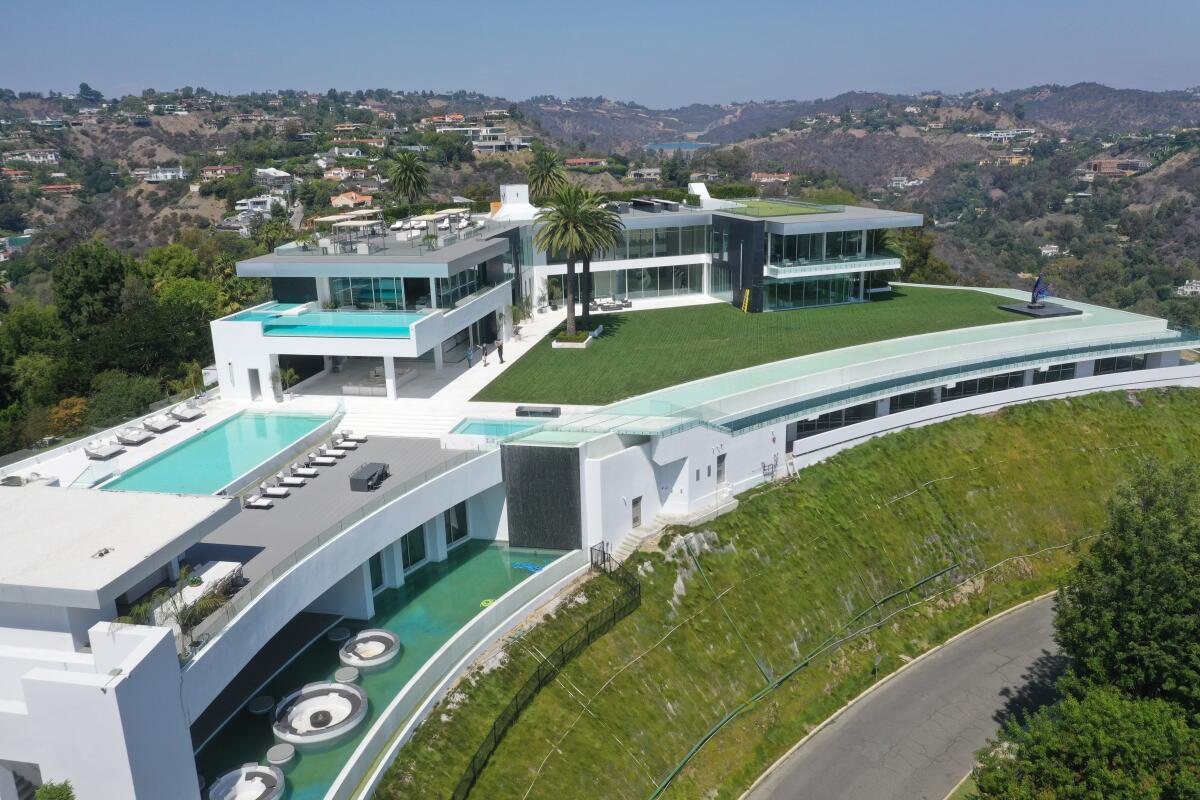
Castillo, whose company services more than 30,000 homes per year around the Westside and San Fernando Valley, said residential air-conditioning systems are generally split into zones so they can cool separate, specific areas depending on which part of the house you’re occupying at a given time.
So while the typical home may have a single HVAC system that serves two zones — one upstairs, one downstairs — Castillo said a house like the One may have up to 50 HVAC systems and even more zones: one for the butler’s pantry, one for the bowling alley, one for the movie theater, one for the candy room, and so on. A series of ducts snakes off each system delivering air to each zone, and residents can control which zones have cool air from thermostats or their phones.
Mansions of such magnitude are often used for events or parties, during which the entire house would need to be cooled, but on a typical day, residents use a much more limited space. The estate has 21 bedrooms, but it’s highly unlikely all 21 would be used every night. The living room, kitchen and dining room would be cooled on a regular basis, but spaces such as the beauty salon and nightclub probably aren’t set at a crisp 70 degrees all the time.
As California’s increasingly punishing summers force residents to conserve, several celebrities such as Kim Kardashian and Kevin Hart have been accused of violating drought restrictions, using hundreds of thousands of gallons of water to keep their luxury compounds lush and green. Electricity isn’t quite as controlled as water usage, but Castillo said the difference in usage between a standard home and mega-mansion can be staggering.
“In theory, a 100,000-square-foot home would have the same energy bill as 40 2,500-square-foot homes,” he said. “That’s two city blocks’ worth of houses to cool one property.”
But in reality, he said, the mansions’ bills would be even bigger because more space brings more luxuries. More pools that require filters and pool pumps. More fountains and spas. More elevators and media rooms. More electric vehicle chargers. Bigger refrigerators and subzero freezers. Not to mention higher ceilings that increase the volume that needs to be cooled.
“The wealthy have an obligation to look at the energy they’re consuming because their carbon footprint is so much greater,” Castillo said.
Southern California home prices were unchanged in August from a month earlier as rising mortgage rates made houses even less affordable.
Gov. Gavin Newsom recently came under fire for appearing in a video asking Californians to curb their A/C use while wearing a zipped-up fleece jacket, leading some to assume he was speaking in a needlessly over-cooled room. His spokesperson said the message was filmed following state conservation guidelines.
But it was a bad look during the recent run of heat waves, when people without A/C relied on frozen sheets, cold showers and portable fans to make it through the day. Some rented hotel rooms. Others posted up at grocery stores. Those who did have A/C were asked to keep it in check, as Flex Alerts pleaded with Californians to cut down on energy use to avoid blackouts.
In California — the state with the fourth-highest average electricity bills in the country — homeowners had another reason to lay off the A/C: their pocketbooks.
In June, California homeowners paid the second-highest rate in the country for electricity behind only Hawaii, according to energy broker Save On Energy. Golden State residents paid an average of 28.98 cents per kilowatt hour (kWh), a 25.4% increase year-over-year that nearly doubles the national average of 15.42 cents per kWh.
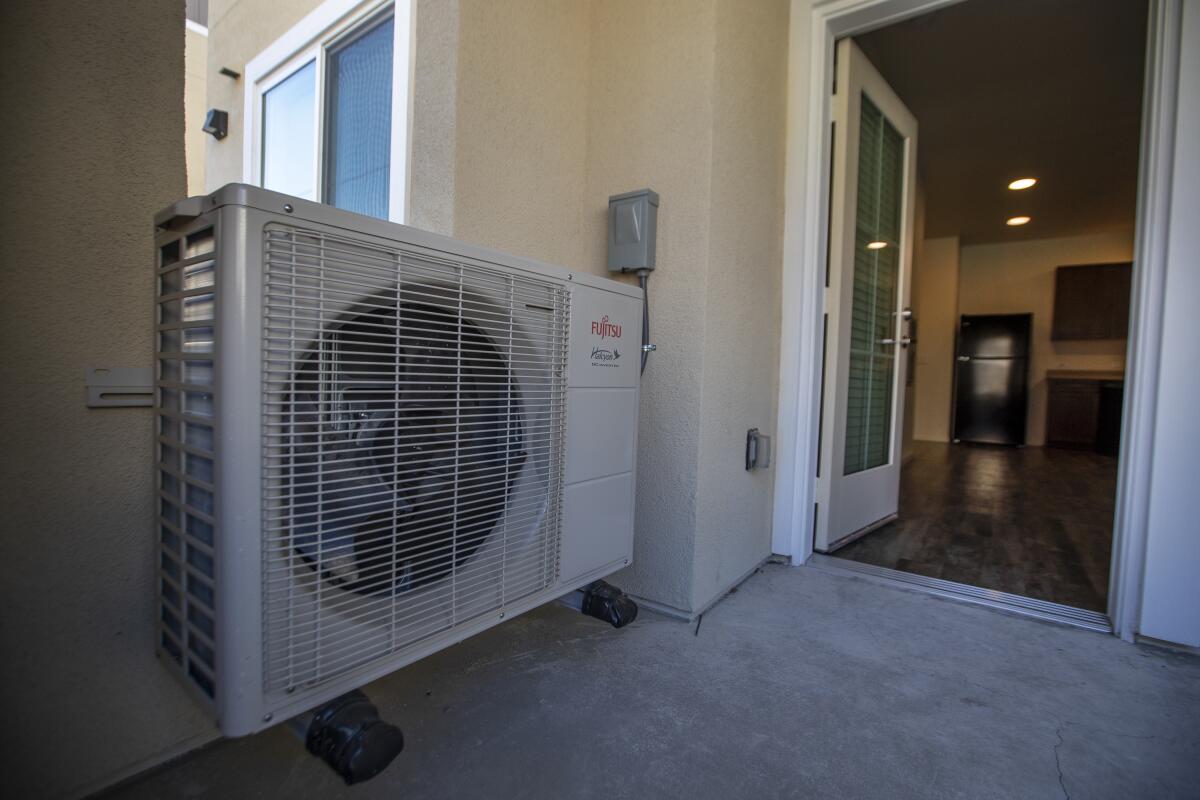
Electric bills vary wildly depending on the size of your home, but according to Energy Sage, the average electricity user in L.A. spends $269 per month on electricity — or $3,228 per year. During a record-setting summer that regularly saw temperatures soar into the triple-digits, that monthly bill spikes significantly for those who use A/C.
For homeowners trying to save some money on their electric bills, Castillo said unfortunately central air is typically 70% of any electric bill during the summer, so the the main way to save is to simply turn it off, get the unit serviced or get a new system altogether.
“People think that leaving appliances running or turning off lights will make a big difference, but the main difference-maker is the age and usage of the A/C unit,” he said.
Air conditioning systems are built to be efficient for around 10 years, so older homes with older systems will generally have much larger bills. If your lights dim for a moment when your unit kicks on, that means the system is consuming a significant amount of energy, Castillo said.
California lawmakers struck a seemingly impossible deal to build more housing in areas traditionally zoned for big box stores and office buildings.
As electricity rates get higher and bills gets pricier, more luxury homes are offering alternatives such as solar power to help cut costs.
In Bradbury, a $13.58-million listing for a 16,000-square-foot mega-mansion makes sure to note that the compound comes with solar panels. Over in Topanga, a $9.9-million listing for an 8,000-square-foot home on 17 acres rids its potential owner of a guilty conscience by offering a 12kW solar array with 60 panels that covers all electrical needs, “providing unlimited hot water for truly guilt-free energy use.”
Of course, solar panels have their environmental downsides as well. They’re weather-dependent, they take up space, and they only last for about 25 years, while the process of making them requires extensive mining for minerals and uses toxic chemicals — and lots of electricity.
Other listings go out of their way to highlight the A/C set-ups. The marketing materials for a $12.5-million coastal villa in Malibu note the elevator, wraparound balcony and infinity pool, and that “all the A/C units in the main house are new.” In Manhattan Beach, an $8.9-million Midcentury home brags about the movie theater, but also its multi-zoned cooling.
In Venice, two TV writers are offering a home with an ever better pitch: No need for A/C at all, they say. That’s because the architect designed the striking residence in such a way that the vertical floor plan serves as a chimney, drawing cold air through the floor and sending warm air up and out through vents in the roof. Even on days when the temperature nears 100, they say natural (yet presumably 95-plus-degree) breezes cool the space, eliminating the need for artificial air.
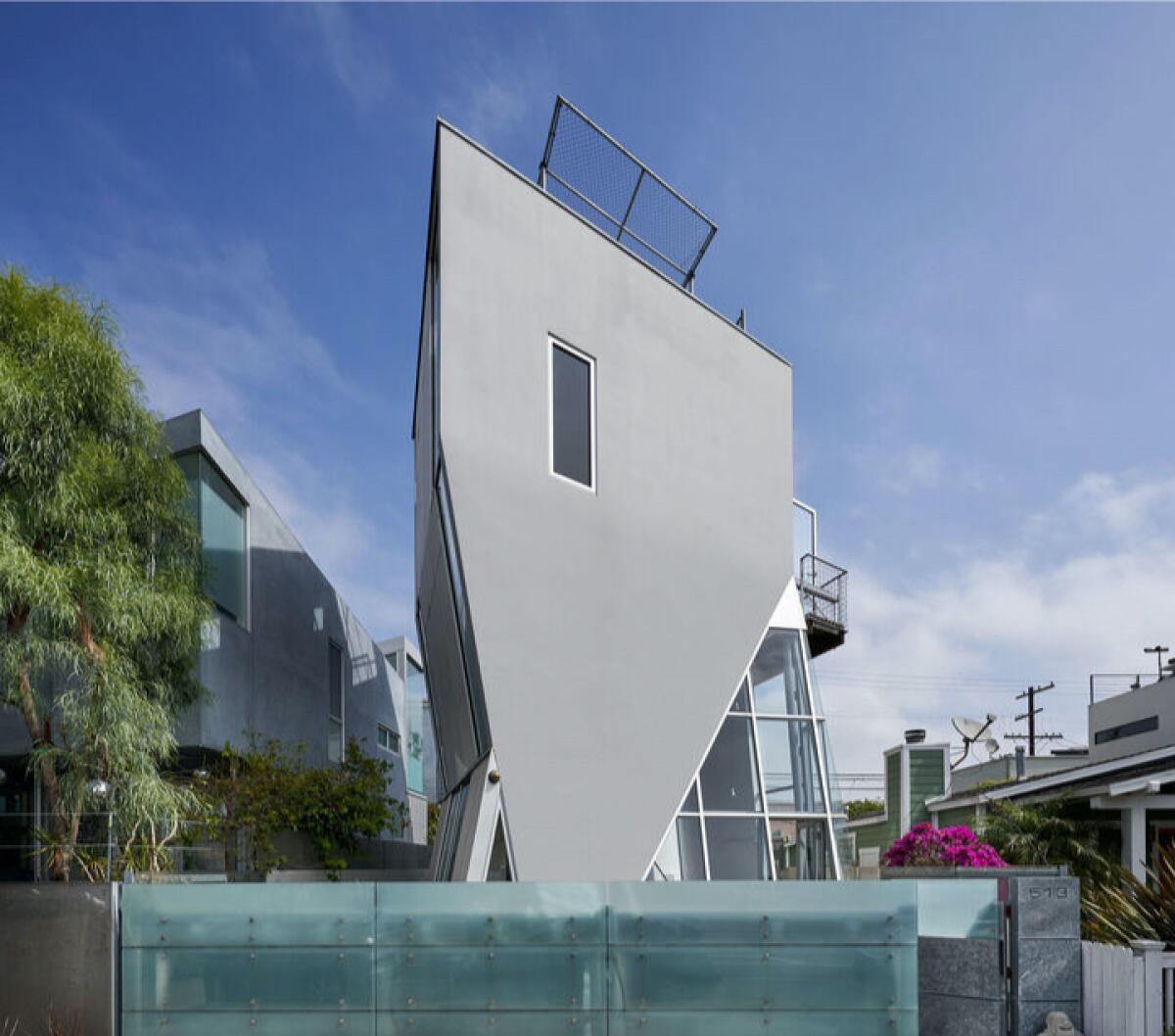
J. Stewart Burns, who wrote and produced for “The Simpsons,” and Lillian Yu, whose credits include the new FX show “Little Demon,” said the home’s design provides so much air flow that they don’t feel hot.
Listed for $5.8 million, the property consists of two steel-framed towers connected by a bridge at the top. It holds four bedrooms and 3.5 bathrooms across 2,522 square feet.
“I’m eco-conscious, so it’s nice to have a house that has other ways of providing coolness without running A/C,” Yu said.
The couple says they have used the money they’ve saved on electricity while living in the home to ease the cost of raising their three children. They’ve since move to Santa Monica, where the cooling bill is a bit more formidable.
“I use autopay for the utility bills because I don’t even want to know the difference,” Burns said. “It’s significant.”
More to Read
Sign up for Essential California
The most important California stories and recommendations in your inbox every morning.
You may occasionally receive promotional content from the Los Angeles Times.
